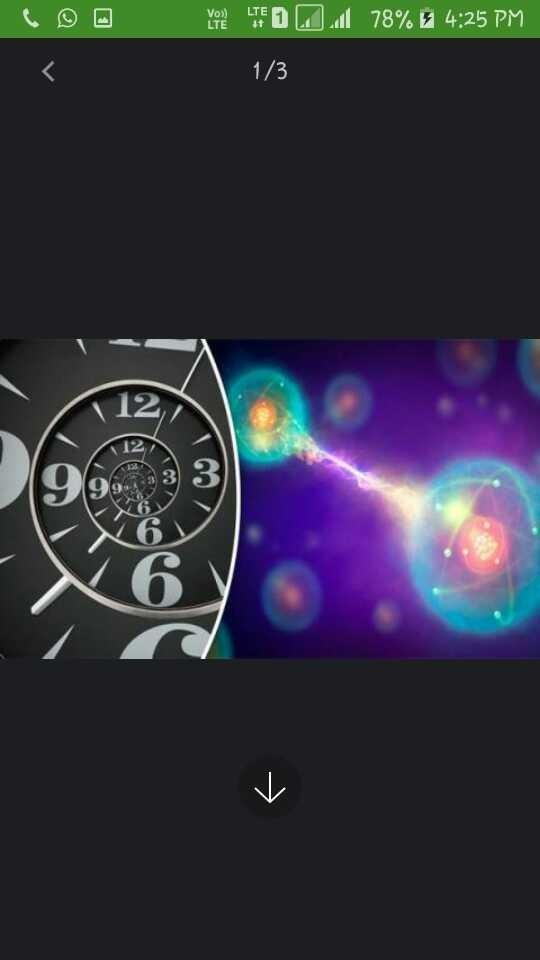Quantum Theory
The standard quantum theory dictates that all the particles in the universe have no definitive states – weirdly, that is, until they are measured.
Additionally, when two particles interact, they become entangled on a quantum, sub-atomic level and rid themselves of their individual probabilities.
Albert Einstein first described this as “spooky action at a distance” as even though the two entangle particles could be at opposite ends of the universe, they are still connected some how as one of the two particles would be horizontally polarised, while the other would become vertically polarised.
With distance between the particles not being a factor, researchers have now set out to discover whether time plays a part in quantum mechanics.
Particles can interact at other ends of the universe
As there is nothing in the laws of physics that states that time should move forward, with physicists saying that time could have gone backwards if things had panned out differently from the Big Bang, experts wanted to see whether this is yet another rule that quantum mechanics ignores.
A theory known as “retrocausiality” suggests that a particle can run backwards through time to the point where it is entangled and affects its partner that way.
Matthew S Leifer from Chapman University in California and Matthew F Pusey from the Perimeter Institute for Theoretical Physics in Ontario want to test the theory.
Quantum entanglement
Dr Leifer told Phys.org: "There is a small group of physicists and philosophers that think this idea is worth pursuing.”
The researchers based their theory on adaptations of Bell’s Theorem.
In 1964, Northern Irish physicist John Bell proved that if particles have definite states even when no one is looking – known as ‘realism’ – and no signal travels faster than light – ‘locality’ – then there is a limit to he amount of correlation that can be observed between the measured states of two particles.
Dr Leifer and Dr Pusey adapted Bell’s theorem and swapped space for time, and they concluded that unless anyone can prove that time should definitely go forwards then retrocausiality is a possibility – IE quantum particles can go back in time to affect their partner.
Dr Leifer said: "The reason I think that retrocausality is worth investigating is that we now have a slew of no-go results about realist interpretations of quantum theory, including Bell's theorem.”
He added: “"These say that any interpretation that fits into the standard framework for realist interpretations must have features that I would regard as undesirable.
“Therefore, the only options seem to be to abandon realism or to break out of the standard realist framework.”
The Best Space Photos of the Year
Stunning imagery taken from Space
However, many physicists are not completely sold on the idea, and Dr Leifer says that it is up to himself and Dr Pusey to prove them wrong.
He said: "There is not, to my knowledge, a generally agreed upon interpretation of quantum theory that recovers the whole theory and exploits this idea.
“It is more of an idea for an interpretation at the moment, so I think that other physicists are rightly sceptical, and the onus is on us to flesh out the idea.”
Remember, if quantum physics is a bit over your head, the late Richard Feynman, who is considered one of the godfathers of quantum physics, once said: "I think I can safely say that nobody understands quantum mechanics” 
Well described
Congratulations @paragkumar! You have completed some achievement on Steemit and have been rewarded with new badge(s) :
Click on any badge to view your own Board of Honor on SteemitBoard.
For more information about SteemitBoard, click here
If you no longer want to receive notifications, reply to this comment with the word
STOP